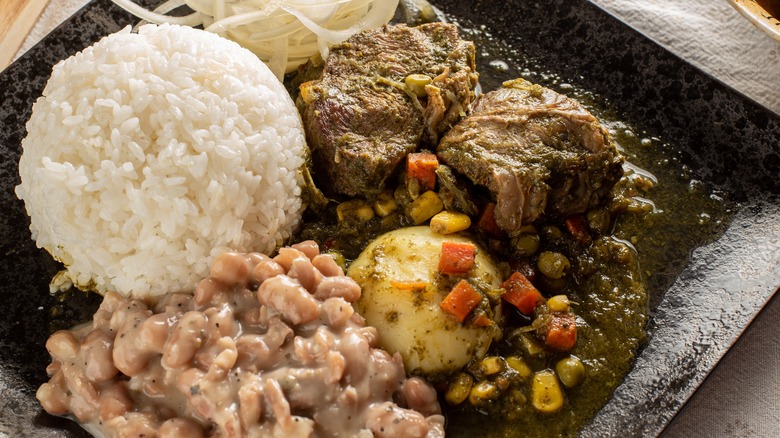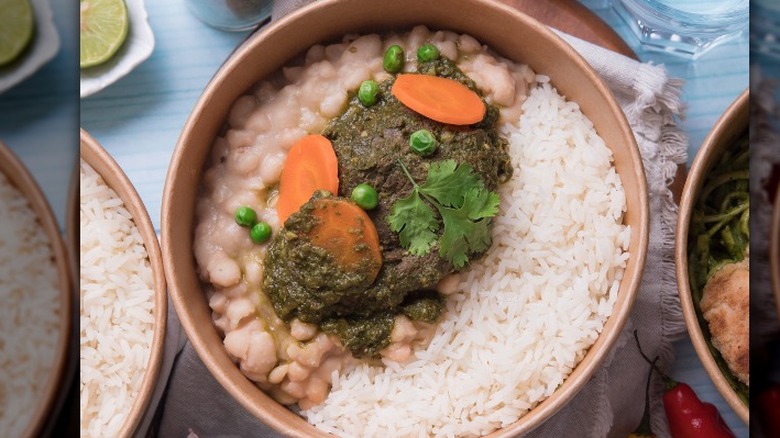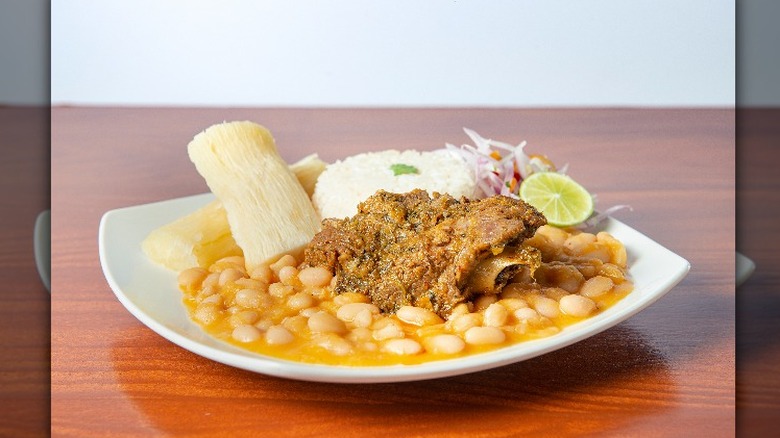Seco De Carne Is The Spicy Peruvian Beef Stew You Should Know
From French boeuf Bourguignon to Tex-Mex chili, and Korean beef stew, it's hard to beat the deeply-aromatic taste of slow-cooked beef. A wonderful method of concurrently tenderizing and maximizing flavor, it's a cooking technique that pays dividends for patience.
In Peru, a variety of slow-simmered stews are known as secos. Spanish for dry, the name refers to the reduced-sauce style rather than the texture of the meat. These dishes are simmered for so long that the volume of aromatic liquid evaporates into a densely flavored thick sauce. An especially popular rendition of the dish is called seco de carne. Crafted with beef chunks cooked down in cumin, cilantro, and spicy aji amarillo sauce, the dish mesmerizes with its delectable herb and beef flavors. Additions to the stew vary, but can include potatoes, carrots, and peas, making it a filling and comforting dish, especially when served with rice and beans. Rather than using an extensive list of ingredients, the stew relies on a patient cooking process. Let's dive into the cross-continental origins of this beloved Peruvian classic.
Background of seco de carne
The fragrant dish belongs to a class of stews popular in both Peru and Ecuador. Originally hailing from the northern region of Peru, seco is now classified as a comida criolla. This style of cooking encompasses a combination of indigenous, African, and Spanish culinary influences.
More than other Peruvian dishes, seco de carne traces its roots to Africa, specifically Northern, more Arab-influenced regions of the continent. A rich, cumin-based stew, it's really a deviated version of a tagine. In fact, it originally started as a dish crafted with mutton, known as seco tajine. That tagine-based method was likely introduced by slaves brought to the continent. The dish later evolved to encompass local ingredients, such as aji amarillo. In addition to the popular beef version, seco is also made with goat meat in Peru's Northern regions, and with seafood in coastal Lima. Seco is primarily defined by its slow-simmering preparation style.
How seco de carne is prepared and served
Since it's a slow-cooked preparation, the best beef cut is one suitable for stews, such as a chuck roast or short ribs. Principal aromatics include garlic, onion, aji amarillo, salt, pepper, cumin, and most characteristically — plenty of cilantro. Although some use the variant of the herb common in the U.S., traditional Peruvian seco is made with culantro, which has a more potent flavor. To round out the stew's dense consistency, additional vegetables include carrots, peas, potatoes, and sometimes squash.
Cooking begins with the preparation of the aromatic sauce by blending the culantro with additional ingredients, such as spinach or mint-like huacatay, into water or broth. Next, a pan is heated, and the chunks of beef are seared until brown. The aromatics are added, and the herb-liquid is poured in. The mixture is cooked down for up to three hours, with the potatoes and other vegetables added near the end. Once everything is tender, the dish is served alongside rice and beans.


